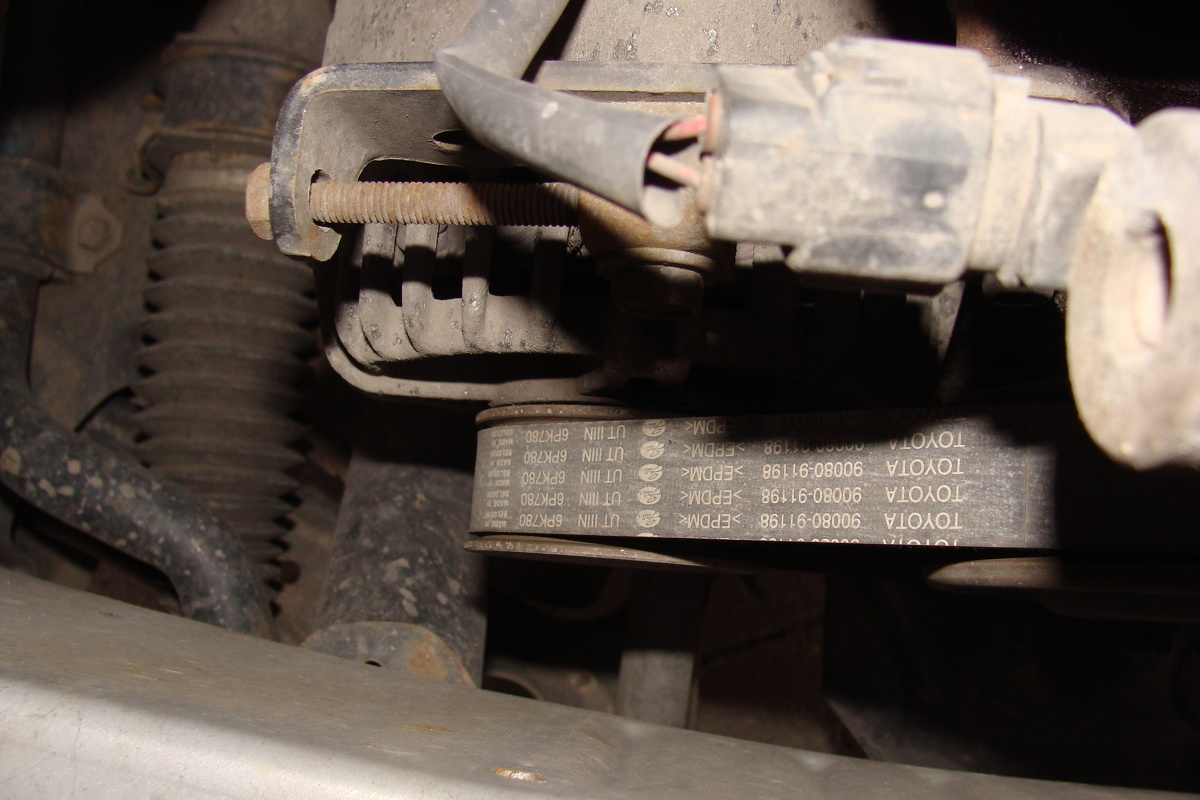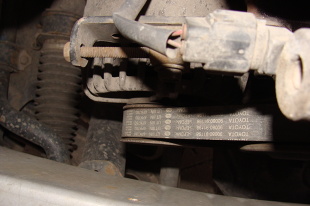
Tension control
 The correct operation of the engine components driven by the crankshaft when using a belt drive depends, among other things, on the correct tension of the drive belt.
The correct operation of the engine components driven by the crankshaft when using a belt drive depends, among other things, on the correct tension of the drive belt.
 This condition applies both to the V-belts used in older designs and to the V-ribbed belts used today. The tension of the drive belt in the belt drive can be adjusted manually or automatically. For manual adjustment, there are mechanisms by which you can change the distance between mating pulleys. On the other hand, the so-called tensioner, the roller of which exerts a corresponding force on the drive belt with a constant distance between the pulleys.
This condition applies both to the V-belts used in older designs and to the V-ribbed belts used today. The tension of the drive belt in the belt drive can be adjusted manually or automatically. For manual adjustment, there are mechanisms by which you can change the distance between mating pulleys. On the other hand, the so-called tensioner, the roller of which exerts a corresponding force on the drive belt with a constant distance between the pulleys.
Too little tension on the drive belt causes it to slip on the pulleys. The result of this slippage is a reduction in the speed of the driven pulley, which in turn can lead to a decrease in the efficiency of, for example, the alternator, fluid pump, power steering pump, fan, etc. Lower tension also increases the vibration of the pulley. belt, which in extreme cases can cause it to break off the pulleys. Too much tension is also bad, as it negatively affects both the service life of the bearings, mainly the driven pulleys, and the belt itself.
In the case of manual adjustment, the tension of the belt is measured by the amount of its deflection under the action of a certain force. This requires some experience, especially when assessing the pressure on the belt. Ultimately, a satisfactory result can be achieved by trial and error.
The automatic tensioner is virtually maintenance free. Unfortunately, its mechanism is prone to various kinds of failures. If the tensioner roller bearing is damaged, which is manifested by a characteristic noise during operation, the bearing can be replaced. On the other hand, a drop in preload spring force usually requires a completely new tensioner to be installed. Improper fastening of the tensioner can also quickly turn into serious damage.
